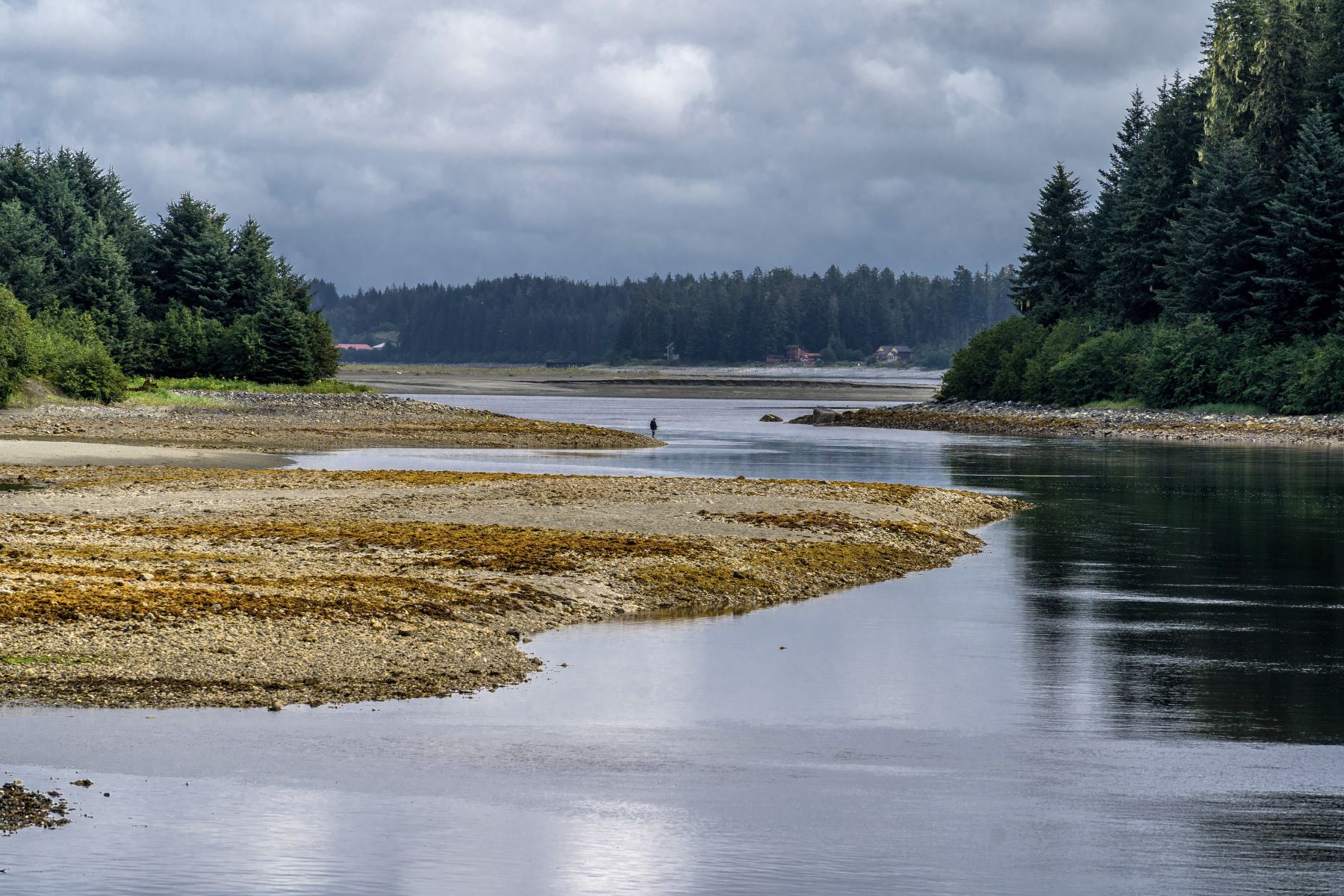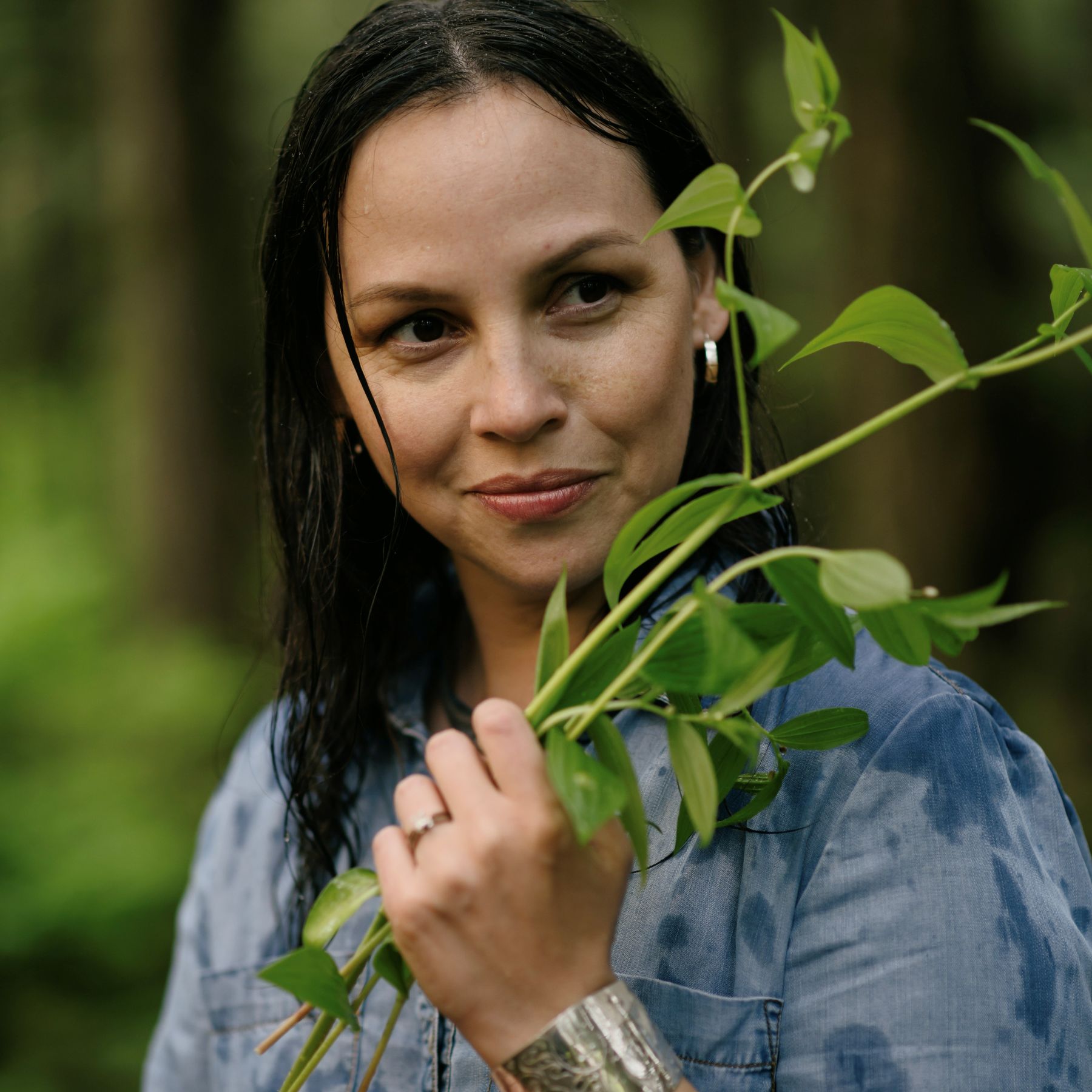Growing up in Yakutat: First-Hand Accounts of Cultures & Traditions
Yakutat sits at the very top of Southeast Alaska, looking straight down on what is known as the Inside Passage. If you are visiting Alaska on a large cruise ship, you may just pass on by this community without stopping. This Tlingit village, once a logging community, was the stomping ground for my childhood. It boasts miles of sandy beaches, the towering Wrangle Mountain range, lush rainforests, and 30 miles of drivable road. Yakutat, AKA, my home.
Known for the best steelhead fishing in the world, for surfable icy waves, and for being home to the actor Martin Sensmeier, Yakutat is one of the smallest towns that Alaska Airlines flies in and out of daily. Which means: easy access for visitors who want to visit this rugged fishing village.
My hometown, Yakutat, has shaped the person I am today. Growing up surrounded by the vast landscape, rich community traditions, and Tlingit protocols, I developed a deep appreciation for our subsistence lifestyle. This experience has influenced my passion for creating cultural art, writing, and filmmaking.
When I think of my childhood home, I can still smell fresh bread baking in the oven, I can feel the crisp cold air on my face as I race down the beach on a three wheeler. I can hear the ocean waves crashing down and the cries of eagles in the distance. I can feel the glacier mud squish between my fingers trying to work it into pottery. I can smell the smell of wet dog and wet rain gear after coming inside from picking salmonberries. (We always had a guard dog to alert us of bears.)

Creating Cultural Art
“Sit down.” My mother beckoned. She called me to join her outside at our picnic table. Branches of our big cottonwood tree dangled above. “I want to teach you something,” she said. I remember looking down at a box of leather lace, beads, and feathers. That day was my tenth birthday. For my present, my mom was teaching me how to make dream catchers. I sat there for the next hour, hands on fishing twine, weaving the spider-like web that is involved in making a dreamcatcher. I was completely immersed in creating art, and yet another part of me was curious and slightly envious. Because, according to a commercial I recently saw at a friend's house, 10 year olds had their birthday at Chuck E Cheese. Little did I know this value of quality time spent together would be something ingrained in me, while the desire of celebrating at Chuck E Cheese would quickly fade away.
This wasn't the beginning of creating art for me; crafts and arts never had a starting date in my mind, it was just a part of life. From home life, to school, to community events, it seemed everyone had room to be creative. At home, my mother was an avid skin sewer and cake decorator. At school we created giant posters to support our school basketball teams. At community events we proudly displayed and sold our craft creations to our friends and family who always praised our work and encouraged us to keep it up.

Community Traditions & Tlingit Protocols
Yakutat is a community shrinking in population. When I was a child our village had close to 1000 people, today it is home to around 600 people. A community in this size meant we knew nearly everyone; it also meant that our lives, as everyone’s there, was a vital part contributing to the wellbeing of our community.
Walking into the Forest was the Tlingit way to say someone had died. This was often the phrase used at the Memorial potlaches. These potlatches were part of Tlingit protocol for keeping balance amongst the two moieties (Eagle and Raven). Growing up Tlingit in Yakutat meant staying up into the wee hours of the night at potlatches, either serving or being served, depending on whose clan was hosting. We attended these potlatches several times a year; these potlatches were filled with ceremony, and ceremony was nothing to be rushed. Enter in: patience. It is here I learned the importance of serving others as well as the importance of saying thank you and receiving.
In those wee hours I learned the importance of honoring someone’s death, something just as vital as honoring their life. It was at these ceremonies that I learned how to grieve and how to comfort others. It was at these koo. éex' (potlatches) that I learned healing can come from silence while still being in other people’s presence. Other times it comes from a big bowl of salmon and seaweed soup while you eat in the company of your clan.
These koo. éex’ were a large part of our life. I never realized until leaving home that this was not common everywhere. Not every community had a support system like this.

Subsistence Living
Most Alaska Natives, and people living locally in Alaska, will almost always share that harvesting and living off the land is one of the most special aspects of living in Alaska. My childhood was no different. Similar to the Chuck E Cheese commercial was the McDonalds commercials. Oh wow, did 7 year old me wish I could go for a Happy Meal. As I feasted on salmon, scallops, and other seafood, I remember complaining. My uncle responded with laughter and said, “Oh poor you, you have to eat crab again for dinner.” He knew then what I know so well now…we ate like royalty.

As an adult, foraging and cooking is one of my favorite past times, despite my interest in what was going on in culinary world outside of Yakutat. I can still feel the excitement of making my own Christmas gifts in high school. I spent weeks picking and processing a variety of locally grown berries that I crafted into jams and jellies. I suppose a source of pride that sticks with me to this day. I still celebrate this subsistence lifestyle. It is in our daily living, in our hosted events, and what we share publicly through our website Forest Fresh Alaska.

During my childhood years, clan members were in a transition from the boarding school era, where culture was frowned upon, to going back to our cultural traditions. This meant, though we had certain traditions and ceremonies that were being practiced, as a culture we were still working to reclaim endangered arts and the near extinction of the Tlingit language. Through the years I have had the privilege of witnessing teachers bring arts back from the brink; my mother was one of those teachers and continues to this day. I also have spent a deal of time teaching cultural arts and foraging. As far as the Tlingit language, I am learning bits and pieces each day from my son who is eagerly learning and just as eager to teach it! Growing up Tlingit in Yakutat left me with the rich influence of Tlingit art, our memorial potlatches, and our abundance subsistence lifestyle.
So, if you are on a cruise ship, just passing by the little village of Yakutat, take a moment to pause, take in the view of those glorious Wrangell Mountain range, breathe in the salty ocean air, and reflect on culture. If a glimpse of Yakutat is not enough, if you are a curious traveler, consider purchasing an Alaska Airlines ticket and spend a day or two in this gem of a village. Stop in at Jennie’s Gift Shop, it’s the road before heading out to Anku beach, and say hello to my parents for me.

New! Alaska Native Culture Guide
Immerse yourself in Alaska Native heritage and learn how to experience the living culture of the state's Indigenous peoples.


